-
 Bitcoin
Bitcoin $117900
0.31% -
 Ethereum
Ethereum $3766
0.28% -
 XRP
XRP $3.176
-0.31% -
 Tether USDt
Tether USDt $1.000
0.00% -
 BNB
BNB $795.6
1.51% -
 Solana
Solana $186.8
-1.09% -
 USDC
USDC $0.9999
-0.01% -
 Dogecoin
Dogecoin $0.2353
-1.33% -
 TRON
TRON $0.3226
1.49% -
 Cardano
Cardano $0.8172
-1.08% -
 Sui
Sui $4.178
3.06% -
 Hyperliquid
Hyperliquid $43.05
-3.39% -
 Stellar
Stellar $0.4367
-0.57% -
 Chainlink
Chainlink $18.62
1.47% -
 Hedera
Hedera $0.2828
6.63% -
 Bitcoin Cash
Bitcoin Cash $584.7
5.65% -
 Avalanche
Avalanche $24.81
2.53% -
 Litecoin
Litecoin $112.8
-0.88% -
 UNUS SED LEO
UNUS SED LEO $8.975
-0.08% -
 Shiba Inu
Shiba Inu $0.00001395
-1.07% -
 Toncoin
Toncoin $3.285
-1.05% -
 Ethena USDe
Ethena USDe $1.001
0.01% -
 Polkadot
Polkadot $4.123
0.76% -
 Uniswap
Uniswap $10.49
-0.18% -
 Monero
Monero $326.5
0.14% -
 Dai
Dai $0.9999
-0.02% -
 Bitget Token
Bitget Token $4.576
0.34% -
 Pepe
Pepe $0.00001247
-1.55% -
 Cronos
Cronos $0.1400
3.77% -
 Aave
Aave $295.1
-0.73%
How is DeFi's yield calculated?
Understanding the calculation of DeFi yield, influenced by APY, compounding, token price fluctuations, and potential risks, empowers investors to make informed decisions and optimize their yield-generating strategies within the decentralized finance landscape.
Feb 16, 2025 at 10:24 am
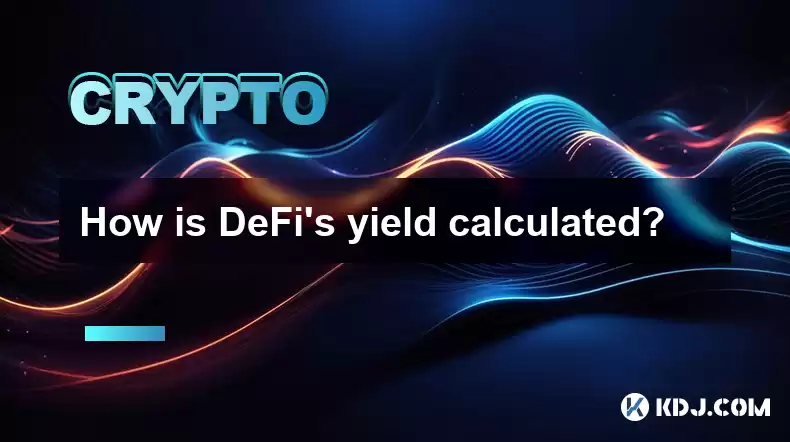
Key Points:
- Overview of DeFi Yield and Its Components
- Step-by-Step Guide to Calculating DeFi Yield
- Factors Influencing DeFi Yield
- Strategies for Maximizing DeFi Yield
- Risks and Considerations Associated with DeFi Yield
How is DeFi's Yield Calculated?
DeFi (Decentralized Finance) has revolutionized the financial landscape by introducing a vast array of yield-generating opportunities that harness the power of blockchain technology. Understanding how DeFi yield is calculated is crucial for informed decision-making and maximizing returns.
Step-by-Step Guide to Calculating DeFi Yield:
- Identify the DeFi Yield Source: Determine the specific DeFi protocol, platform, or asset that you are seeking to generate yield from. Different mechanisms have varying calculation methods.
- Calculate the APY (Annual Percentage Yield): The APY represents the annualized rate of return on your initial investment. It is calculated by compounding the underlying interest rate over a specified period of time, typically one year.
- Factor in Compounding: DeFi yield often benefits from compounding, where interest earned is reinvested to generate additional interest. Consider the frequency and timing of compounding to accurately estimate the overall yield.
- Estimate DeFi Token Price Fluctuations: DeFi yields are frequently paid in the project's native token. Anticipate potential fluctuations in the token's market price over the yield-generating period.
- Weigh Impermanent Loss Risks: Liquidity pools, a common DeFi yield generation method, carry the risk of impermanent loss. Calculate the potential impact of price ratio shifts between paired assets.
Factors Influencing DeFi Yield:
- Underlying Asset Risk: The specific DeFi asset or protocol you choose will have varying levels of risk, impacting the potential yield.
- Market Conditions: The overall market volatility and conditions can directly influence DeFi yield rates. Favorable market conditions generally lead to higher yields.
- Protocol Features: The design and features of the DeFi protocol, such as staking rewards or lending incentives, can enhance the yield potential.
- Demand and Supply: The supply of DeFi assets and the demand for their yield-generating services can influence yield rates.
Strategies for Maximizing DeFi Yield:
- Diversify Yield Sources: Spread your investments across multiple DeFi platforms and assets to mitigate risk and potentially increase overall yield.
- Consider Staking or Liquidity Providing: Staking native tokens or providing liquidity to liquidity pools can offer higher yield opportunities but also carry higher risks.
- Monitor Yield Rates Regularly: Keep track of changing yield rates across DeFi platforms and adjust your investment strategy accordingly.
- Evaluate Protocol Security: Ensure that the DeFi protocols you use have robust security measures in place to protect your assets.
- Understand Reward Lock-Ups: Some DeFi mechanisms may lock your rewards for a set period, impacting your liquidity.
Risks and Considerations Associated with DeFi Yield:
- Smart Contract Vulnerabilities: DeFi protocols rely on smart contracts, which can be susceptible to security exploits or coding errors.
- Market Volatility: DeFi assets can experience significant price fluctuations, impacting the value of your yield.
- Regulatory Uncertainty: The regulatory landscape surrounding DeFi is evolving, and changes in regulations could affect the stability of yield-generating platforms.
- Impermanent Loss: Liquidity pools expose you to the risk of impermanent loss, where the value of your assets may decrease if the price ratio of the pair changes adversely.
- Fees and Gas Prices: DeFi transactions incur gas fees, which can reduce your yield if they are high.
FAQs:
Q: How can I calculate the daily yield of my DeFi investment?
A: Divide the APY by 365 (days in a year) to get the daily yield percentage. Multiply this by your initial investment to determine the daily yield amount.
Q: What are some common DeFi yield sources?
A: Staking, lending, providing liquidity, yield farming, and automated market making (AMM).
Q: Why do DeFi yields fluctuate?
A: DeFi yields are influenced by market conditions, supply and demand, protocol features, and token price fluctuations.
Q: How can I reduce the risks associated with DeFi yield?
A: Diversify yield sources, use reputable protocols with strong security, monitor market conditions, and understand the potential risks.
Q: What is the best DeFi yield strategy for beginners?
A: Diversify your investments, start with stablecoins or low-risk assets, and gradually explore higher-yield opportunities as you gain experience.
Disclaimer:info@kdj.com
The information provided is not trading advice. kdj.com does not assume any responsibility for any investments made based on the information provided in this article. Cryptocurrencies are highly volatile and it is highly recommended that you invest with caution after thorough research!
If you believe that the content used on this website infringes your copyright, please contact us immediately (info@kdj.com) and we will delete it promptly.
- Crypto ETFs and Altcoins: Navigating the Wild West with Meme Coins and Tokenized Assets
- 2025-07-27 23:04:06
- Pi Coin in 2026: Will It Be Worth the Wait?
- 2025-07-27 23:10:12
- Dogecoin Price Prediction: Bullish W Pattern Sparks Hope for $1 DOGE
- 2025-07-27 23:15:21
- Bitcoin Price, Portfolio Growth, and the Remittix Alternative: Navigating the Crypto Landscape
- 2025-07-27 23:04:06
- Cryptos to Watch in 2025: Punisher Coin, Chainlink, and the Altcoin Arena
- 2025-07-27 18:30:13
- Bitcoin, Altcoins, Rebound: Navigating the Crypto Comeback Trail
- 2025-07-27 18:30:13
Related knowledge
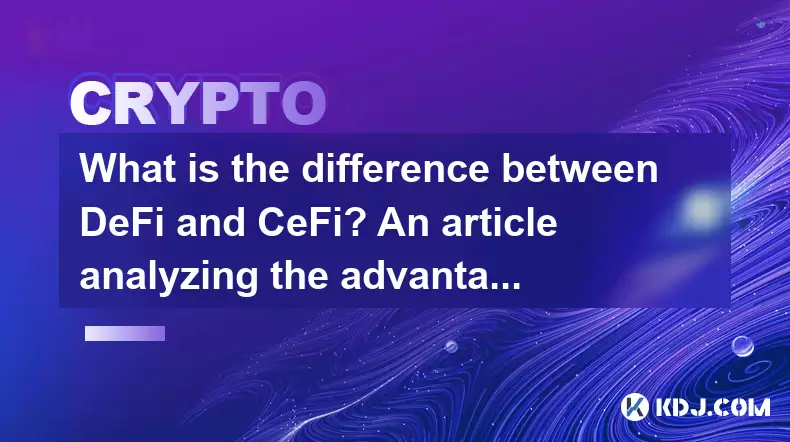
What is the difference between DeFi and CeFi? An article analyzing the advantages and disadvantages of both
Jun 13,2025 at 03:57am
Understanding the Foundations of DeFi and CeFiTo fully grasp the difference between DeFi (Decentralized Finance) and CeFi (Centralized Finance), it’s ...
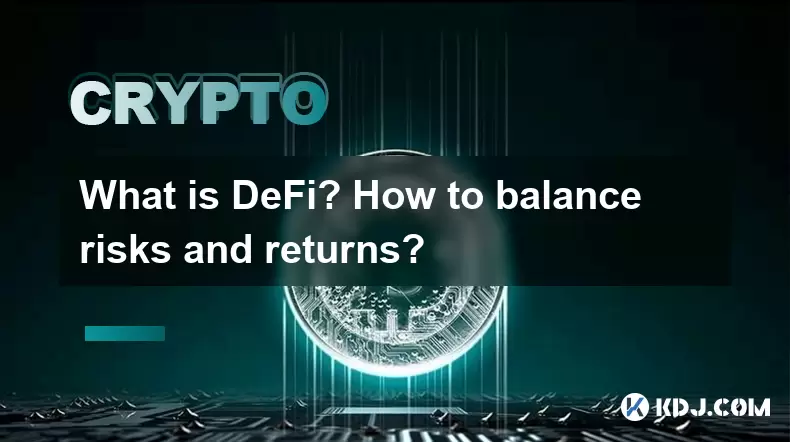
What is DeFi? How to balance risks and returns?
May 31,2025 at 12:22pm
What is DeFi? How to Balance Risks and Returns? Decentralized Finance, commonly known as DeFi, represents a revolutionary shift in the financial ecosy...
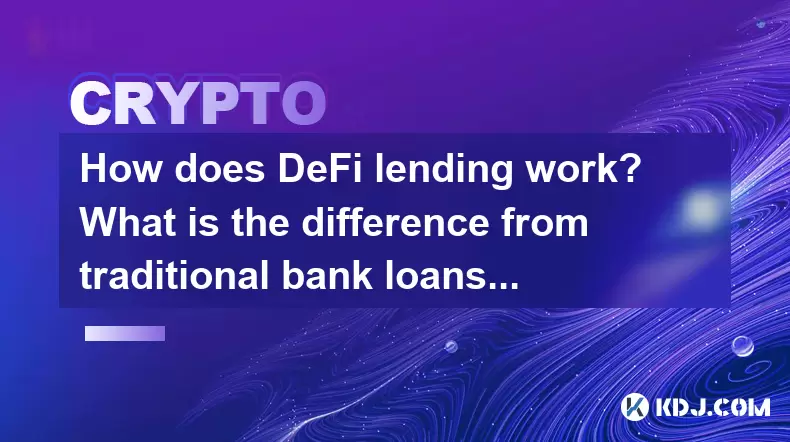
How does DeFi lending work? What is the difference from traditional bank loans?
May 29,2025 at 05:36pm
Introduction to DeFi LendingDeFi lending, or decentralized finance lending, represents a revolutionary shift in the way borrowing and lending are cond...
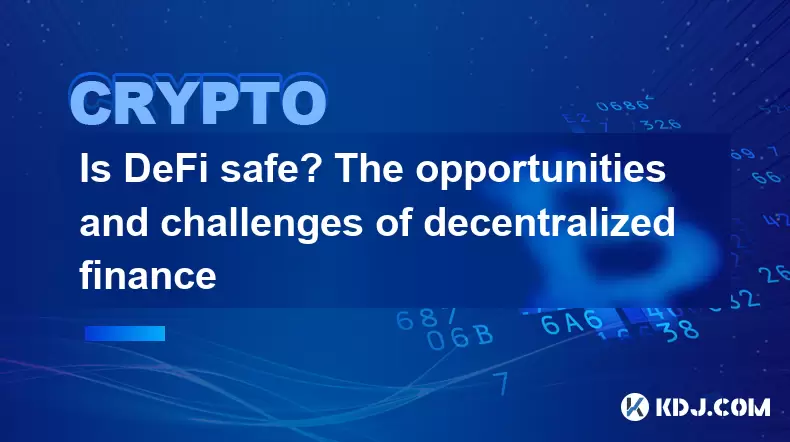
Is DeFi safe? The opportunities and challenges of decentralized finance
May 27,2025 at 02:28pm
Decentralized Finance, commonly known as DeFi, has revolutionized the financial landscape by offering a range of financial services without the need f...
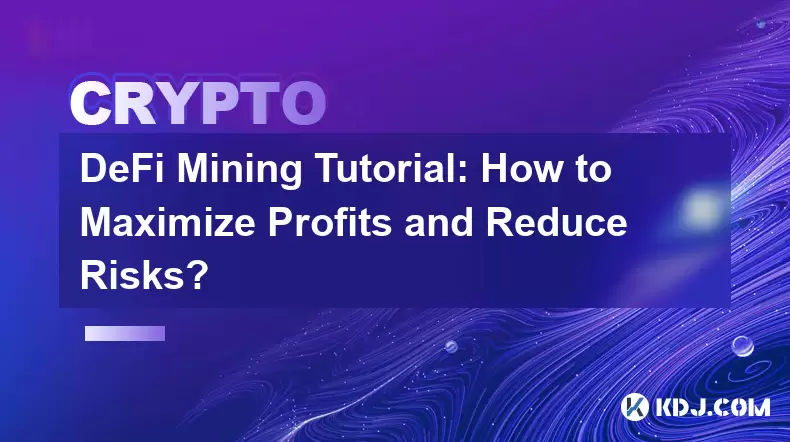
DeFi Mining Tutorial: How to Maximize Profits and Reduce Risks?
May 27,2025 at 07:42am
DeFi, or Decentralized Finance, has opened up a new world of opportunities for crypto enthusiasts looking to maximize their profits through various mi...
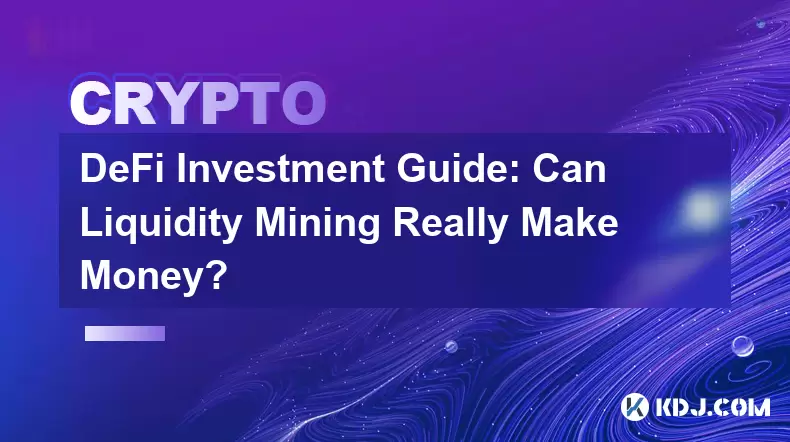
DeFi Investment Guide: Can Liquidity Mining Really Make Money?
May 28,2025 at 10:18am
Introduction to Liquidity Mining in DeFiLiquidity mining has emerged as a popular method for earning passive income within the decentralized finance (...

What is the difference between DeFi and CeFi? An article analyzing the advantages and disadvantages of both
Jun 13,2025 at 03:57am
Understanding the Foundations of DeFi and CeFiTo fully grasp the difference between DeFi (Decentralized Finance) and CeFi (Centralized Finance), it’s ...

What is DeFi? How to balance risks and returns?
May 31,2025 at 12:22pm
What is DeFi? How to Balance Risks and Returns? Decentralized Finance, commonly known as DeFi, represents a revolutionary shift in the financial ecosy...

How does DeFi lending work? What is the difference from traditional bank loans?
May 29,2025 at 05:36pm
Introduction to DeFi LendingDeFi lending, or decentralized finance lending, represents a revolutionary shift in the way borrowing and lending are cond...

Is DeFi safe? The opportunities and challenges of decentralized finance
May 27,2025 at 02:28pm
Decentralized Finance, commonly known as DeFi, has revolutionized the financial landscape by offering a range of financial services without the need f...

DeFi Mining Tutorial: How to Maximize Profits and Reduce Risks?
May 27,2025 at 07:42am
DeFi, or Decentralized Finance, has opened up a new world of opportunities for crypto enthusiasts looking to maximize their profits through various mi...

DeFi Investment Guide: Can Liquidity Mining Really Make Money?
May 28,2025 at 10:18am
Introduction to Liquidity Mining in DeFiLiquidity mining has emerged as a popular method for earning passive income within the decentralized finance (...
See all articles

























































































